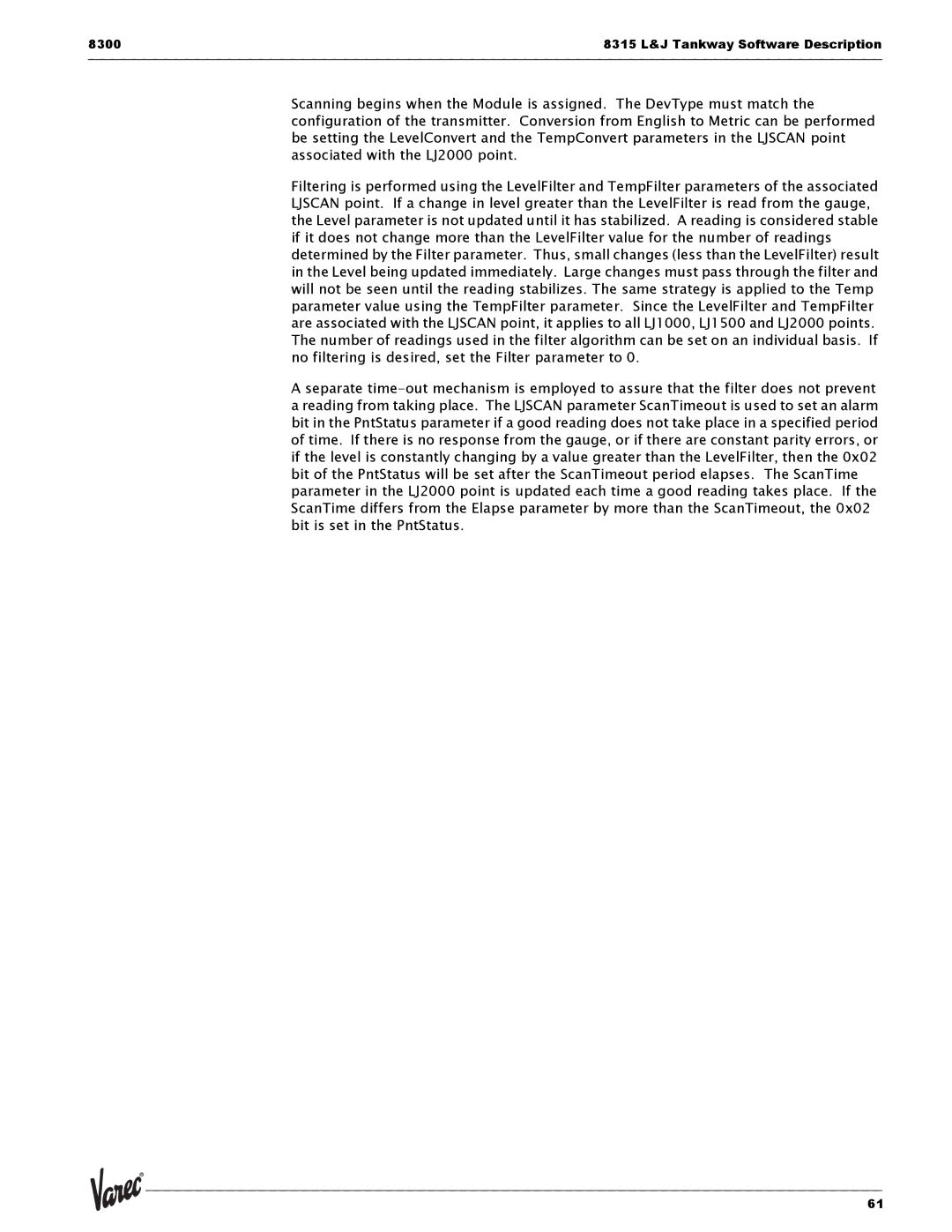8300 | 8315 L&J Tankway Software Description |
|
|
Scanning begins when the Module is assigned. The DevType must match the configuration of the transmitter. Conversion from English to Metric can be performed be setting the LevelConvert and the TempConvert parameters in the LJSCAN point associated with the LJ2000 point.
Filtering is performed using the LevelFilter and TempFilter parameters of the associated LJSCAN point. If a change in level greater than the LevelFilter is read from the gauge, the Level parameter is not updated until it has stabilized. A reading is considered stable if it does not change more than the LevelFilter value for the number of readings determined by the Filter parameter. Thus, small changes (less than the LevelFilter) result in the Level being updated immediately. Large changes must pass through the filter and will not be seen until the reading stabilizes. The same strategy is applied to the Temp parameter value using the TempFilter parameter. Since the LevelFilter and TempFilter are associated with the LJSCAN point, it applies to all LJ1000, LJ1500 and LJ2000 points. The number of readings used in the filter algorithm can be set on an individual basis. If no filtering is desired, set the Filter parameter to 0.
A separate
61
